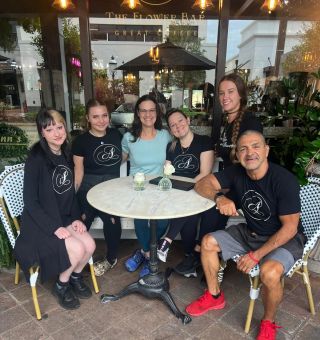The routine of “work, eat, sleep, repeat” can be draining, leading many to feel a lack of fulfillment. True satisfaction involves thriving, not just surviving. If this resonates, it might be time to explore the concept of the third place, a term popularized by sociologist Ray Oldenburg. This concept refers to spaces beyond the office (the second place) and home (the first place), where you can truly unwind, connect, and rejuvenate. The goal of a third place is to be casual and welcoming—a place where members of a community can interact, and cost doesn’t prevent people from attending.
Balancing leadership responsibilities with personal time is tough, especially with the blur between work and personal life due to digital connectivity. Finding a third place is vital—it serves as a haven to foster creativity, maintain balance, and enhance well-being, ultimately boosting your leadership effectiveness.

Over my two decades as a leadership coach, I’ve witnessed firsthand the transformative power of third places. My morning retreats to a quaint, Parisian-style coffee shop have not only rejuvenated my own spirit but have also provided deep insights into the subtle art of balancing leadership. It is where I reconnect with myself through the daily newspaper, a good book, or engaging conversations with the exceptional staff, who recognize me rain or shine. The community spirit is palpable, especially in the warmth the staff extended after the passing of my dog Frankie, who was a familiar face with his regular “pup cup and croissant.”
This café has become more than just a place; it’s a sanctuary. Friends are often surprised at how I’ve safeguarded this quiet time for so many years. This spot is essential for my well-being, powering me up for the day ahead.
Where to Start
Begin by reflecting on your preferences and needs. Consider the activities that bring you joy and relaxation. Whether it’s reading, socializing, being in nature, or exploring new cuisines, identifying what resonates with you will guide your search. Think about the atmosphere that may calm you—do you thrive in bustling environments with background chatter or prefer quiet spots for introspection? Also, assess how far you’re willing to travel and how easily you can integrate your third place into your existing routine.
Then, once you have a sense of what you’re looking for, start exploring options. As you visit potential third places, pay attention to the ambiance. Does it feel inviting and conducive to relaxation? Observe how people interact—is there a sense of community? Consider comfort and amenities such as seating, Wi-Fi availability, and food options. Trying different times and days can also give you a fuller picture of each place’s atmosphere and crowd dynamics. Notice how you feel in each environment—your intuition often guides you to where you feel most comfortable and at ease. Trust your instincts and allow yourself the freedom to explore multiple options before settling on your preferred third place.
Options to Explore
- Libraries and Bookstores: Quiet and cozy environments ideal for reading, studying, or attending community events like book clubs, author talks, or craft classes.
- Parks and Outdoor Spaces: Nature settings such as parks, botanical gardens, or waterfront areas, where people can enjoy fresh air, exercise, and scenic views.
- Community Centers: Places that host various activities, including fitness classes, arts workshops, and social gatherings, fostering community engagement.
- Animal Shelters: If you love animals, this is a wonderful way to fill your cup and give back to your community by helping to take care of the animals and showing them love. Spending time with animals also has therapeutic benefits.
- Coffee Shops: These are popular for their relaxed ambiance, offering a space to enjoy coffee and snacks, and sometimes even work or socialize in a casual setting.
These examples highlight the diversity of third places, each catering to unique needs. The key is finding a place that aligns with your interests, provides a sense of comfort, and allows you to recharge outside of the pressures of work and home.
Once you have found your ideal spot, create a routine around visiting it regularly. Treat these visits as essential to your well-being and personal enrichment. Remember that your needs and preferences may evolve. Stay open-minded in exploring new third places as your circumstances change over time.
Benefits of Finding a Third Place
Finding a third place offers numerous benefits beyond merely escaping the demands of your professional life:
- Recharge and Rejuvenate: These sanctuaries provide a vital opportunity to step away from the daily grind of meetings and decision-making. By doing so, you can alleviate stress, gain a fresh perspective, and return to your role with renewed energy and clarity.
- Stimulate Creativity and Innovation: Exposure to new experiences and perspectives in third places can stimulate fresh ideas, fostering creativity that is crucial for staying ahead in competitive industries and adapting to changing market dynamics.
- Promote Work-Life Balance: Prioritizing personal interests and well-being in a third place enhances overall resilience and mental health, which improves decision-making and productivity. This also sets a positive example for your team, encouraging a healthier approach to integrating work and life.
Strategic Investment for Leadership Success
Ultimately, embracing a third place is a strategic investment in your leadership effectiveness and personal fulfillment. It empowers you to lead with authenticity, creativity, and resilience, promoting a balanced approach that benefits both your professional performance and personal well-being. This can pave the way for a healthier organizational culture and sustainable success in your leadership journey.
